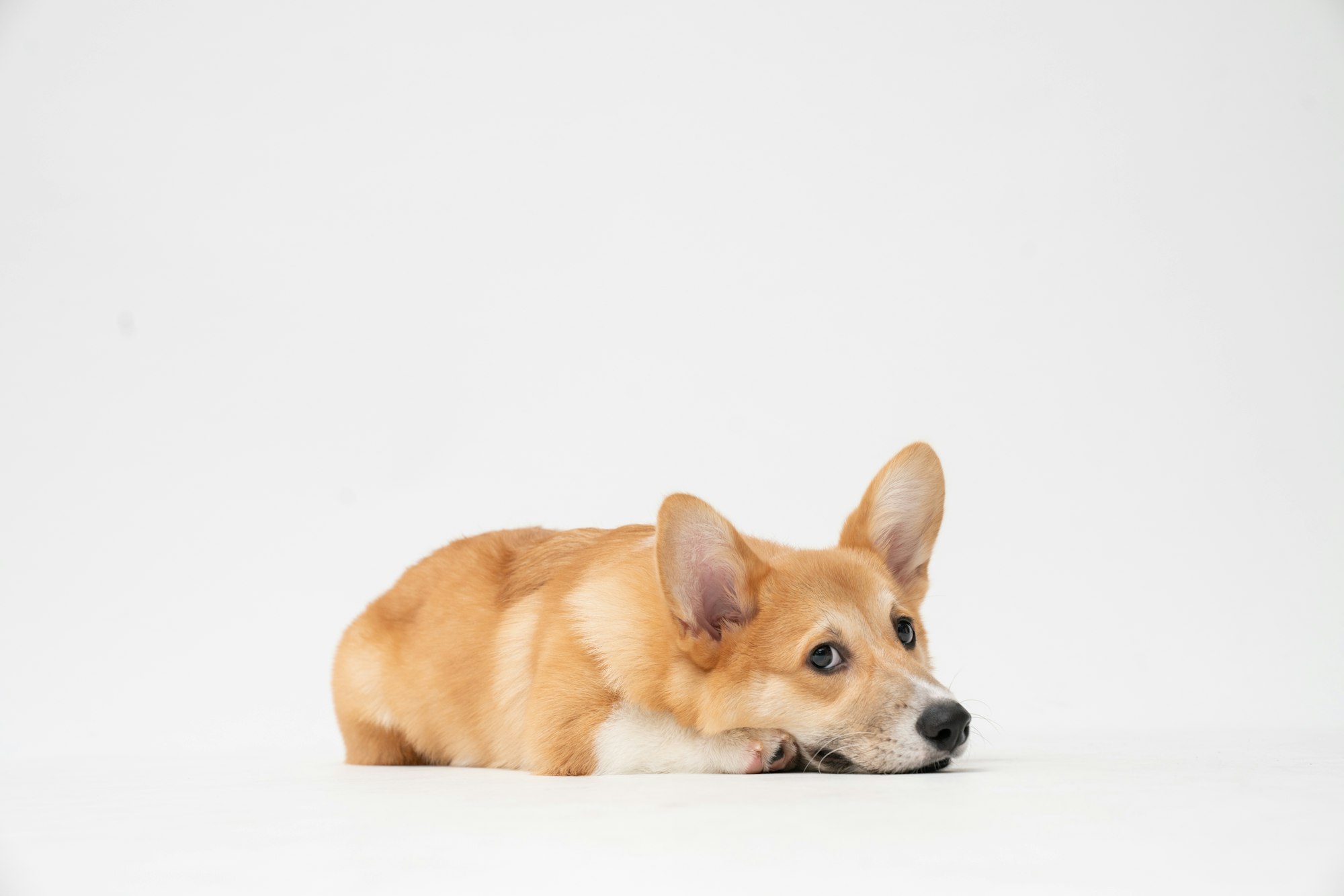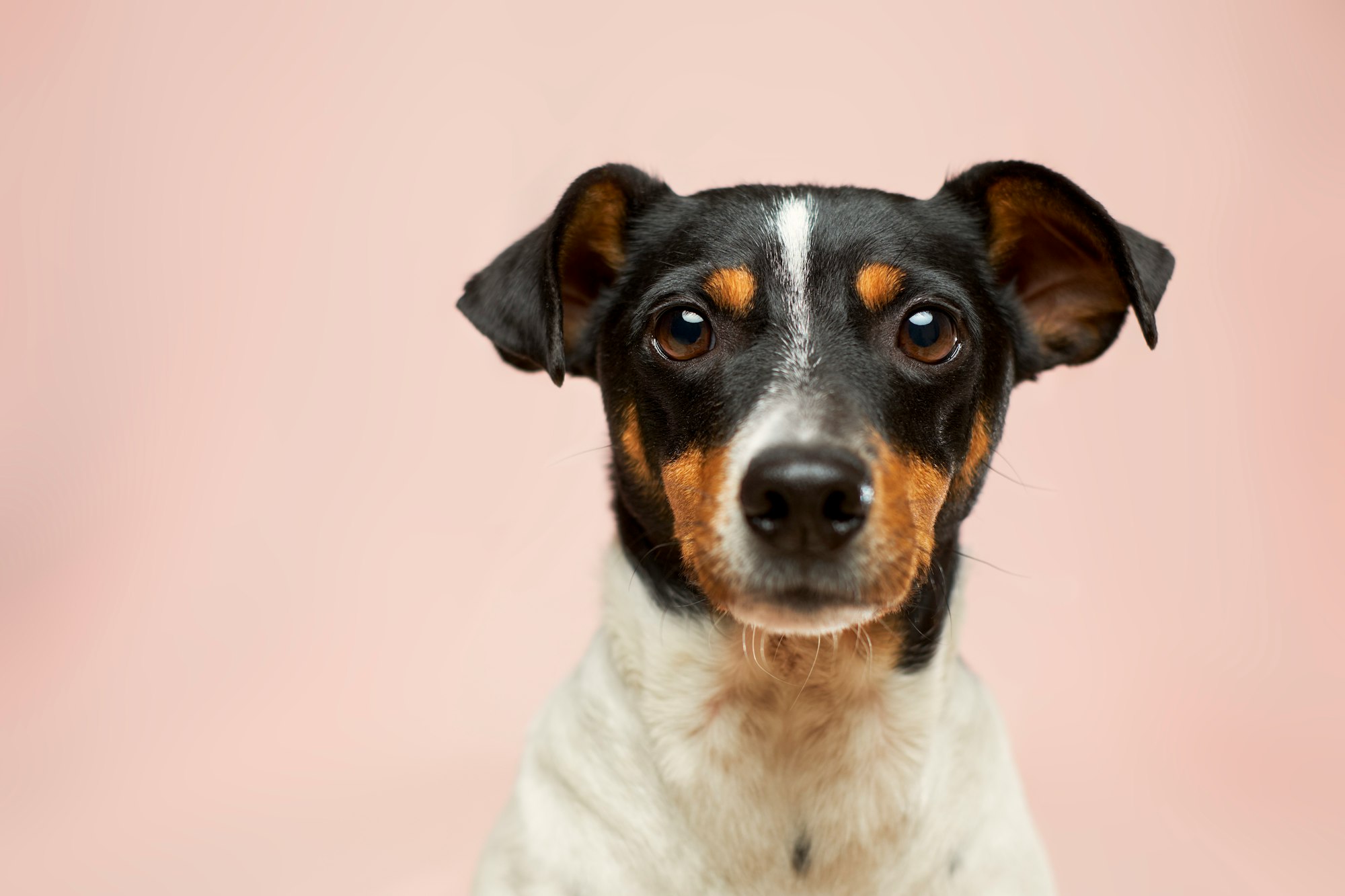Shaving a dog can be a necessary grooming task for various reasons. Understanding when and how to shave a dog properly is essential for their health and well-being. Here is a comprehensive guide on how to shave a dog that covers everything from when it is necessary to shave to the step-by-step process, safety tips, and aftercare. Discover "How do you shave a dog" effectively while keeping their comfort and well-being in mind.
When is Shaving a Dog Necessary?
- Thick or Matted Fur: When a dog's fur becomes excessively thick or matted, shaving can help prevent discomfort and skin issues.
- Overheating: Some dog breeds with dense coats may become prone to overheating in hot weather, making shaving essential for temperature regulation.
- Skin Conditions: Shaving can aid in treating or managing certain skin conditions by allowing better visibility and access to affected areas.
Preparing to Shave a Dog:
- Choosing the Right Clippers: Selecting the appropriate clippers for your dog's breed and coat type is crucial for a safe and effective shaving experience.
- Gathering the Necessary Tools: Besides clippers, you will need tools like scissors, combs, and grooming brushes to prepare your dog's coat before shaving.
- Creating a Calm and Safe Environment: It is vital to establish a calm and safe environment for your dog during the shaving process to minimize stress.
Step-by-Step Guide on How to Shave a Dog:
- Brushing and Detangling the Fur: Before shaving, gently brush and detangle your dog's fur to remove any mats or knots.
- Trimming the Fur with Scissors: Use scissors to trim the long portions of the coat, making it easier to shave with clippers.
- Using Clippers for Shaving: Start shaving your dog's body using the appropriate clipper blade length, moving in the direction of hair growth.
How to Shave Different Parts of a Dog's Body:
- Shaving the Body: Gradually shave the body, maintaining a steady and gentle motion while avoiding sensitive areas.
- Shaving the Face and Ears: Use caution and a smaller clipper blade to shave the face and ears, ensuring minimal risk and increased precision.
- Shaving the Paws and Legs: Carefully trim and shave the fur on the paws and legs, allowing for better hygiene and preventing matting.
- Shaving the Tail: Trim and shave the fur on the tail, paying attention to your dog's comfort and avoiding any excessive pulling.
Safety Tips and Considerations:
- Taking Breaks and Watching for Signs of Discomfort: Monitor your dog's behavior, take breaks if needed, and look for any signs of discomfort or distress.
- Avoiding Sensitive Areas: Take extra care when shaving sensitive areas like the groin, armpits, and bony areas by using shorter clipper lengths or alternatives.
- Preventing Skin Irritation or Injury: Maintain a proper blade angle, avoid applying too much pressure, and ensure the clippers and blades are clean and well-maintained.
Aftercare and Maintenance:
Proper aftercare includes cleaning the shaved areas, keeping your dog calm, and monitoring their response to the shaved coat. Regular brushing and grooming are necessary to maintain their coat and skin health.
By following this guide, you can ensure a safe and successful shaving experience for your beloved canine companion while keeping them comfortable and healthy.
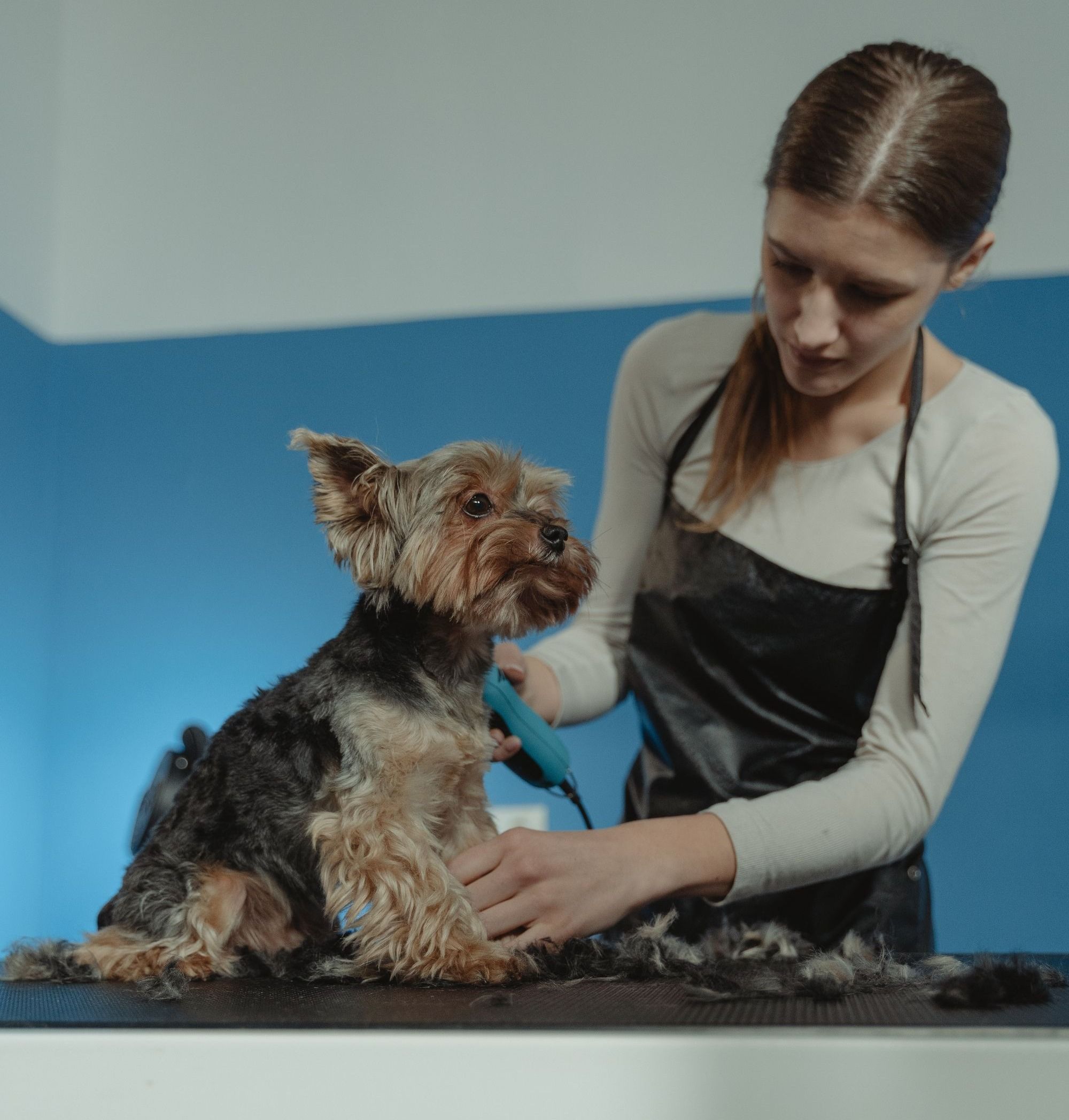
Key takeaways:
- Shaving a dog may be necessary in cases of thick or matted fur, overheating, or skin conditions.
- Before shaving, ensure you have the right clippers and other necessary tools to create a calm and safe environment.
- Follow a step-by-step guide to brush, detangle fur, and use clippers for shaving different parts of a dog's body while taking safety precautions.
When is Shaving a Dog Necessary?
If you're a dog owner wondering when it's absolutely necessary to give your furry friend a shave, this section has got you covered. We'll dive into three key reasons why shaving a dog becomes essential: thick or matted fur, overheating, and skin conditions. So, grab your clippers, and let's explore the circumstances where a dog's gorgeous coat may need a trim to keep them comfortable and healthy.
Thick or Matted Fur
If your dog has thick or matted fur, shaving may be necessary for their comfort and overall well-being. Here are some important considerations:
- Brushing: Before shaving, thoroughly brush and detangle your dog's thick or matted fur to prevent the clippers from snagging or pulling.
- Proper Clippers: Choose clippers specifically designed for pet grooming, with adjustable blades and a quiet motor to reduce anxiety.
- Technique: Start by trimming the thick or matted areas with scissors, being careful not to hurt your dog's skin. Then, use the clippers to smoothly shave the remaining fur.
- Safety Measures: Take breaks during the process and watch for signs of discomfort. Avoid sensitive areas like the face, ears, and genitals, and use caution to prevent skin irritation or injury.
Remember to consult a professional groomer if you are unsure or uncomfortable with shaving your dog's thick or matted fur yourself.
Overheating
Incorporating the keywords 'overheating' naturally in the provided text:
In dogs, overheating can be dangerous and potentially fatal. Shaving a dog's fur during hot weather can help prevent overheating by allowing better air circulation and heat dissipation. Keep in mind that not all dogs should be shaved, as their fur serves as insulation and protection from the sun. Breeds with double coats, like Huskies or Shepherds, have a natural cooling system that can be disrupted by shaving. It's important to consult a veterinarian before deciding to shave your dog. Provide shade, and fresh water, and never leave them in a hot car to protect them from overheating.
In 2017, the American Society for the Prevention of Cruelty to Animals (ASPCA) launched a campaign to raise awareness about the dangers of leaving dogs in hot cars. The campaign emphasized the risks of overheating, urging dog owners to never leave their pets unattended in vehicles, even for a short period of time. The initiative included educational materials, public service announcements, and collaborations with law enforcement to enforce stricter laws against leaving pets unattended in vehicles. The ASPCA's efforts helped raise awareness about the importance of preventing overheating in dogs and saving countless lives.

Skin Conditions
Skin conditions such as dermatitis, allergies, or hotspots can be reasons for shaving a dog. Shaving can provide better access to treatment, minimize irritation and inflammation, and promote healing. If your dog has skin conditions, it is important to consult a veterinarian before considering shaving to determine if it is necessary and safe. Regular grooming and hygiene practices can also play a crucial role in preventing skin issues, including regular bathing, maintaining clean and dry skin, and using appropriate products. Always keep a close eye on your dog's skin condition and seek professional assistance if needed.
A true story highlights the importance of addressing skin conditions in dogs. A friend's dog experienced a severe case of hotspots caused by allergies. In this situation, the vet recommended shaving the affected areas to facilitate treatment and promote healing. Although it took some time for the fur to regrow, the shaved areas allowed for better application of medicated creams, leading to significant relief from discomfort for the dog.
Preparing to Shave a Dog
Preparing to shave a dog is an essential step that sets the stage for a successful grooming session. So, let's dive into the nitty-gritty of this process and discover how to ensure a smooth and stress-free experience for both you and your furry friend. We'll cover everything from choosing the right clippers to gathering the necessary tools and creating a calm and safe environment. Get ready to unleash your grooming skills and make your pup look their very best!
Choosing the Right Clippers
When choosing the right clippers for shaving your dog, it's important to consider the following factors:
- Blade Type: Opt for clippers with sharp, durable blades that are compatible with your dog's fur type.
- Noise Level: Look for clippers that operate quietly to minimize stress for your dog.
- Power Source: Decide between corded clippers for consistent power or cordless clippers for convenience.
- Size and Weight: Choose clippers that are comfortable to hold and maneuver for both you and your furry friend.
- Attachments and Accessories: Check for different comb lengths and blade guards to achieve the desired length and style.
Ultimately, choosing the right clippers will ensure a safe, comfortable, and effective shaving experience for your dog. Consider your dog's specific needs and consult with a professional groomer for guidance if needed.
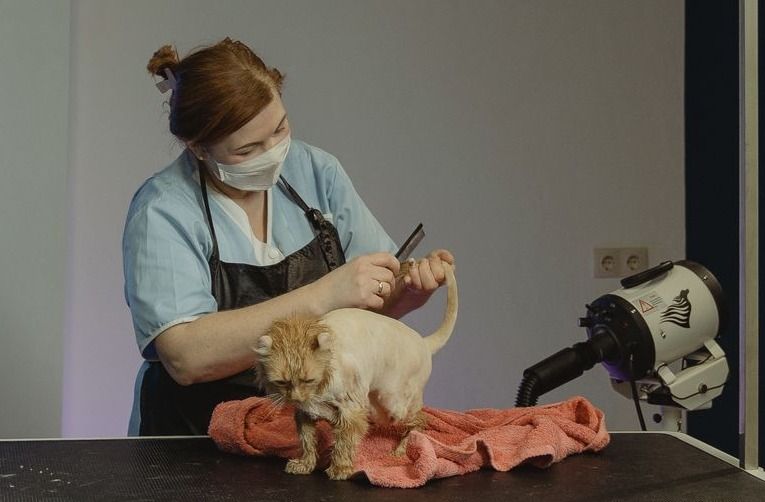
Gathering the Necessary Tools
To successfully shave a dog, gathering the necessary tools is essential. These tools include:
- Clippers: It is important to invest in high-quality clippers specifically designed for pet grooming. Look for clippers with adjustable blades and a quiet motor to minimize noise stress.
- Grooming comb: Utilize this tool to untangle any knots or mats in the dog's fur before shaving.
- Grooming scissors: These scissors are useful for trimming areas that are difficult to reach with the clippers or require more precision.
- Protective gear: To prevent accidental injuries during the grooming process, remember to wear gloves and eye protection.
- Towels or mats: Place these underneath the dog to catch any loose fur or to provide a comfortable surface for grooming.
Creating a Calm and Safe Environment
- To ensure the comfort and safety of your dog, it is essential to create a calm and safe environment when shaving them.
- Find a quiet and peaceful area where your dog feels relaxed and at ease.
- Before you begin, make sure to remove any potential distractions or hazards from the surroundings.
- To provide stability and prevent accidents, use non-slip mats or towels for your dog to stand on.
- Consider soothing your dog with gentle petting or soft music to help create a calm atmosphere.
- Introduce the clippers or grooming tools gradually to your dog, allowing them to become familiar with the items and reducing anxiety.
- During the shaving process, take breaks to give your dog time to rest and alleviate any stress they may be experiencing.
Fact: Dogs have the ability to sense their owner's emotions, so maintaining a calm and composed demeanor will contribute to creating a peaceful environment during the shaving process.
Step-by-Step Guide on How to Shave a Dog
Discover the ultimate way to groom your furry friend with a step-by-step guide on how to shave a dog. From brushing and detangling the fur to trimming with scissors and using clippers for a smooth shave, we've got you covered. Say goodbye to matted fur and hello to a well-groomed pup. Get ready to unleash your inner dog stylist and achieve a fresh, clean look for your canine companion. Let's dive into the essentials of dog shaving!
Brushing and Detangling the Fur
Here is a step-by-step guide on how to naturally incorporate brushing and detangling the fur of a dog before shaving:
- To begin, gently utilize a slicker brush to eliminate any loose hair and tangles, making sure to avoid pulling on the fur.
- If you come across mats and knots, apply a detangling spray or conditioner to soften the hair.
- Carefully work through the mats and knots using a wide-toothed comb or a de-matting tool, starting from the ends and gradually moving upwards.
- In the case of severe mats, it may be necessary to carefully cut them out using blunt-tipped scissors. Take caution not to cut the dog's skin.
- Continue the brushing process throughout the entire coat, ensuring all the layers of hair are reached.
- Give special attention to areas that are prone to matting, such as behind the ears, under the armpits, and around the tail.
- Take breaks if necessary, and provide treats and praise to maintain a calm and cooperative atmosphere during the brushing session.
- Once the fur is free of tangles, you can move forward with trimming or shaving if required.
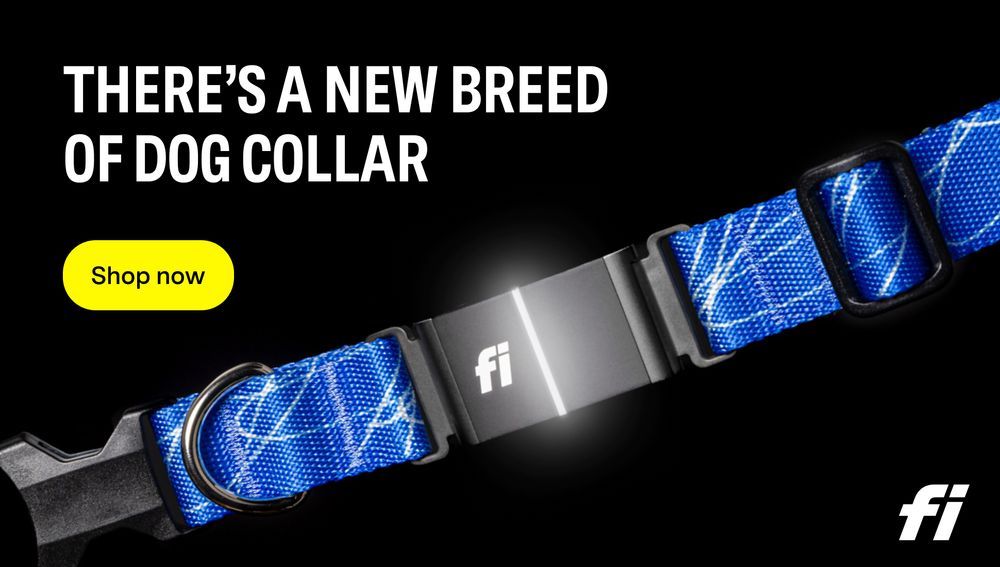
Trimming the Fur with Scissors
When trimming the fur with scissors, it's essential to follow these steps for a safe and effective grooming process:
- Prepare the fur by brushing and detangling any mats or knots.
- Choose a pair of sharp, high-quality scissors specifically designed for pet grooming.
- Gently hold the section of fur you want to trim between your fingers and separate it from the rest of the hair.
- Carefully trim the desired length of the fur, moving in small, controlled cuts.
- Be cautious around sensitive areas, such as the face and paws, ensuring that you don't accidentally nick the skin.
- Regularly check the fur to ensure you're achieving the desired style and maintaining an even appearance.
- Take breaks if needed and watch for any signs of discomfort or stress from your dog.
- After trimming, reward your dog with treats and praise to reinforce positive behavior during grooming.
Using Clippers for Shaving
To effectively use clippers for shaving a dog, follow these steps:
- Prepare the dog by brushing and detangling its fur.
- Ensure the clippers you have are suitable for the dog's size and coat type.
- Gather other necessary tools such as a comb, scissors, and a towel.
- Create a calm and safe environment to avoid startling the dog.
- Start shaving by carefully trimming the fur with scissors, especially if it is heavily matted.
- Use the clippers in the direction of hair growth, keeping a steady hand and light pressure.
- Take breaks to prevent discomfort and monitor the dog for any signs of distress.
- Avoid sensitive areas like the face, ears, paws, and tail, or use caution when trimming there.
- Prevent skin irritation or injury by using a clipper guard and regularly lubricating the blades.
- After shaving, provide any necessary aftercare such as cleaning and moisturizing the skin.
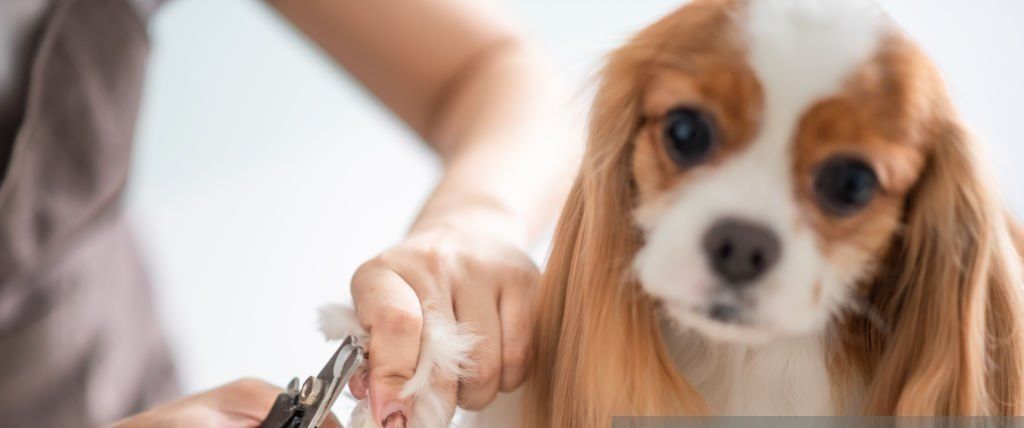
How to Shave Different Parts of a Dog's Body
Keen to learn the art of shaving your furry friend? In this guide, we'll explore how to shave different parts of a dog's body, from their body and face to their paws and tail. Discover invaluable tips and techniques to keep your pup looking stylish and well-groomed. Unleash your inner groomer as we delve into the intricacies of shaving different areas, ensuring your dog's comfort and maintaining their adorable appearance.
Shaving the Body
Shaving the Body can be a necessary grooming task, especially for breeds with long or thick fur that is prone to matting. When shaving the body of a dog, it's important to follow these steps:
- Prepare the dog by brushing and detangling the fur to remove any knots or mats.
- Use scissors to trim the fur to a manageable length before using clippers.
- Choose the right clippers for your dog's breed and fur type.
- Create a calm and safe environment for the grooming process.
- Gently shave the body using the clippers, starting from the neck and working your way down.
Remember to take breaks and watch for signs of discomfort during the process. Avoid sensitive areas and take precautions to prevent skin irritation or injury. Once you have finished shaving the body, continue with the other grooming steps for different parts of your dog's body.
Shaving the Face and Ears
When shaving the dog's face and ears, it's important to take extra care to ensure their safety and comfort. Here is a step-by-step guide to help you through the process:
- Start by brushing the fur around the face and ears to remove any tangles or mats.
- Use rounded-tip scissors to carefully trim any long hair around the eyes, making sure not to get too close to the skin.
- Gently hold the dog's ear and use clippers with a guard attachment to trim the hair on the outer edge of the ear, being cautious not to go too deep.
- For the inside of the ear, use a pair of curved scissors or blunt-nose grooming scissors to carefully trim any excess hair, always being mindful of the dog's comfort and safety.
- When shaving the face, use clippers with a guard attachment or a small pair of grooming scissors to trim the hair around the muzzle and cheeks, paying attention not to get too close to the dog's skin.
Shaving the Paws and Legs
- To properly shave a dog's paws and legs, follow these steps:
- Make sure your dog is calm and comfortable.
- Gently brush and detangle the fur on the paws and legs.
- Use a small pair of grooming scissors to trim any long or overgrown fur.
- Be cautious and avoid cutting the delicate skin or paw pads.
- Next, use clippers with a guide comb to shave the remaining fur on the paws and legs.
- Take breaks if needed and watch for any signs of discomfort or stress from your dog.
- Provide aftercare by gently cleaning the shaved area, applying a pet-safe moisturizer, and offering treats for a positive experience.
- Shaving the Paws and Legs of dogs, including their paws and legs, has been a common practice for centuries. Ancient cultures, such as the Egyptians and Romans, believed that shaving dogs improved their hygiene and overall appearance. Over time, grooming techniques and tools have advanced, ensuring that shaving is done safely and comfortably for our furry companions. Today, proper grooming and shaving techniques are essential to maintain a dog's cleanliness, prevent matting, and promote their overall health and well-being.
Shaving the Tail
To properly shave a dog's tail, follow these steps:
- Start by brushing and detangling the fur on the tail to ensure a smooth shave.
- Trim any excess fur with scissors, being careful not to cut too close to the skin.
- Using clippers with a guard, carefully shave the fur on the tail in the direction of hair growth.
- Take breaks if needed and watch for signs of discomfort or stress in your dog.
- Avoid sensitive areas such as the base of the tail and the tip while shaving the tail.
- Prevent skin irritation or injury by using gentle and controlled movements while shaving the tail.
True History: In ancient Egypt, dogs were often shaved for practical and religious reasons. It was believed that shaving a dog's tail would prevent evil spirits from attaching to the animal. This practice continued in various cultures throughout history but is now primarily done for grooming and health purposes.
Safety Tips and Considerations
Ensure a stress-free dog grooming experience with these essential safety tips. From taking breaks and observing signs of discomfort to avoiding sensitive areas and preventing skin irritation or injury, we've got you covered. Keep your furry friend safe and comfortable throughout the shaving process. Unleash the best grooming practices and make shaving a breeze for both you and your dog.
Taking Breaks and Watching for Signs of Discomfort
- To ensure the safety and well-being of the dog, it is crucial to take breaks and watch for signs of discomfort during the shaving process.
- Creating a calm and relaxed environment for the dog is the first step, in reducing anxiety and stress.
- Start the shaving process slowly and gently, taking breaks between sections to allow the dog to rest.
- Always be attentive to signs of discomfort, such as restlessness, excessive panting, or attempts to pull away.
- If the dog exhibits any signs of distress, immediately stop shaving and provide comfort and reassurance.
- While taking breaks, carefully check the dog's skin for any redness, irritation, or cuts. Address any issues before continuing.
- To reduce the risk of pulling or snagging the dog's fur, ensure the clippers are well-maintained and properly lubricated.
- Take breaks to clean and cool the clippers, preventing overheating and potential discomfort for the dog.
- Throughout the shaving process, remember to reward the dog with treats and praise, reinforcing positive associations.
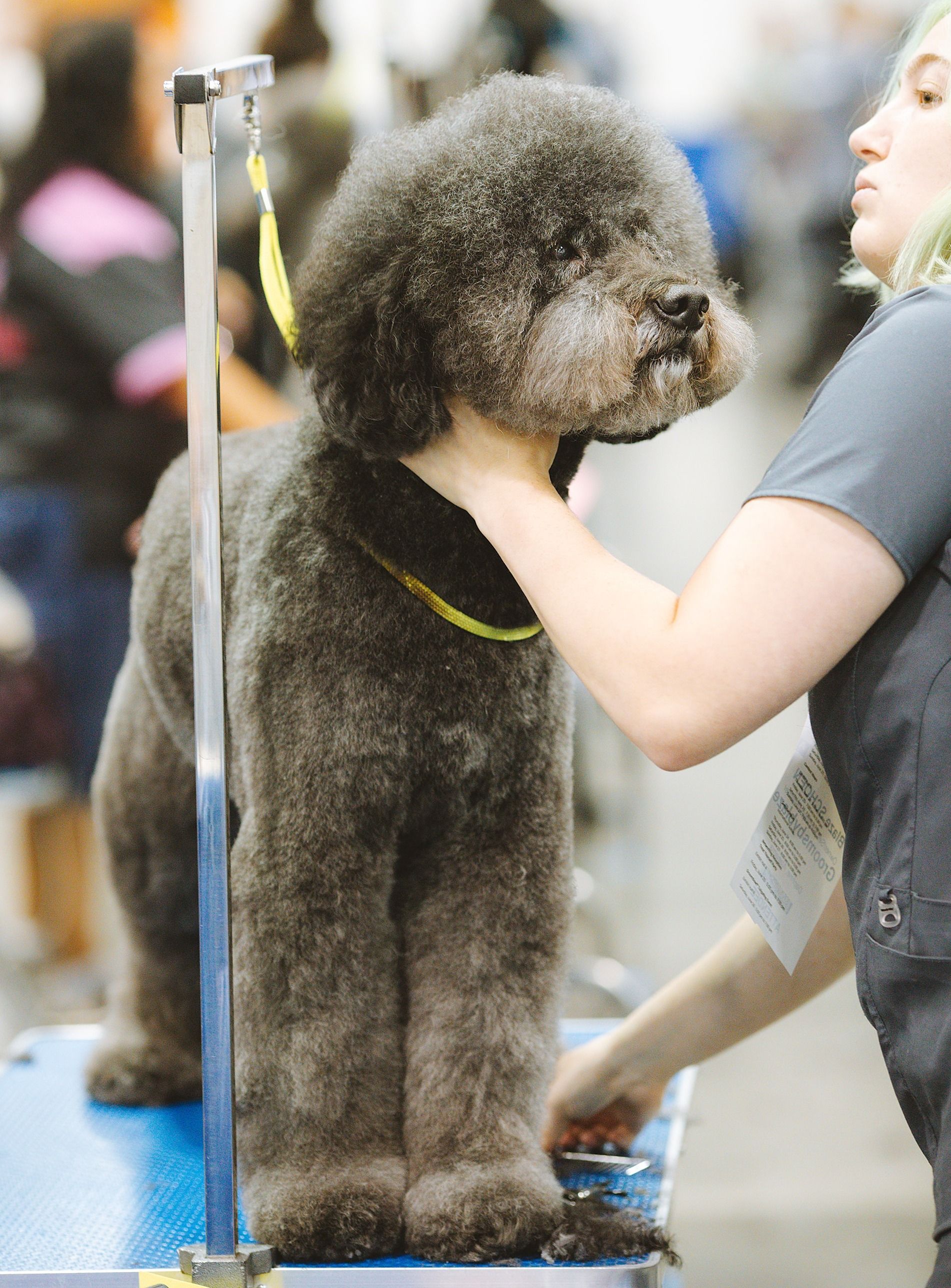
Avoiding Sensitive Areas
When shaving a dog, it is crucial to prioritize avoiding sensitive areas to prevent any discomfort or potential injury. Here are some important tips to keep in mind while grooming your beloved pet:
- To avoid any irritation or possible harm, it is essential to exercise extra caution and refrain from shaving near the genital area.
- Be extremely gentle and handle with care while shaving around the ears as they are highly sensitive and prone to injury.
- When shaving the face, ensure a gentle touch to prevent any accidental nicks or cuts that may occur.
- Pay close attention to the sensitive pads on your dog's paws and be sure to avoid applying excessive pressure or coming into contact with the razor.
- Exercise utmost caution when shaving around the tail to prevent any possible irritation or discomfort.
Preventing Skin Irritation or Injury
To prevent skin irritation or injury when shaving a dog, it's important to follow these steps:
- Properly prepare the dog's fur by brushing and detangling it beforehand to avoid pulling or tugging on the skin.
- Use scissors to trim any long or matted areas of fur before using clippers. By doing this, you can make the shaving process smoother and reduce the risk of snagging the skin, thus preventing skin irritation or injury.
- Choose the right clippers for your dog's specific needs, ensuring they are sharp and well-maintained. This is crucial in preventing skin irritations or injuries caused by pulling or nicking the skin.
- Start shaving in an area that's comfortable and safe for both you and the dog, such as a well-lit space with non-slip mats on the floor. This will contribute to preventing skin irritation or injury during the process.
- Shave in the direction of hair growth to minimize irritation and discomfort, thus effectively preventing skin irritation or injury.
- Take breaks regularly and watch for any signs of discomfort or distress from your dog. This will allow them time to relax, preventing any potential injuries and further skin irritation.
- Avoid sensitive areas, such as the ears, face, and groin, as these areas are more prone to irritation or injury. Use extra caution when shaving around these areas to prevent skin irritation or injury.
- After shaving, examine the skin for any redness, cuts, or irritation. If you notice any issues, apply a soothing ointment recommended by your veterinarian. This helps in preventing or treating skin irritations or injuries.
- Maintain proper aftercare by keeping the shaved areas clean and moisturized. This is essential in preventing further skin irritation or injury. Also, avoid exposing the skin to extreme temperatures or rough surfaces, which can worsen skin irritation.
Aftercare and Maintenance
Aftercare and Maintenance are essential after shaving your dog to ensure their skin stays healthy and their coat remains in optimal condition. It is necessary to moisturize their skin by applying a pet-safe moisturizer or coconut oil to alleviate any dryness or irritation caused by shaving.
Additionally, it is crucial to monitor for Sunburn as shaved areas are more vulnerable. To avoid this, either keep your dog out of direct sunlight or use pet-safe sunscreen. Regular brushing of your dog's coat is also important as it helps prevent matting and promotes healthy hair growth.
Along with this, it is necessary to keep the shaved areas clean to prevent any skin irritation caused by dirt or debris. Lastly, to maintain the shaved look and fulfill your dog's grooming needs, it is recommended to schedule regular professional grooming sessions.
Some Facts About How To Shave a Dog:
✅ Shaving a dog's fur can make them more susceptible to sunburn and skin cancer. (Source: Our Team)
✅ Dogs bred for extreme cold weather may have coats too thick for warm summers, and grooming may be necessary. (Source: Our Team)
✅ Shaving a dog with a double coat can leave them with a patchy coat as the hair may not regenerate. (Source: Our Team)
✅Professional dog grooming costs between $30 to $90, including hair trimming and nail maintenance. (Source: Our Team)
✅ Shaving a dog's fur does not help them stay cool; it actually removes their insulation and increases vulnerability to extreme weather. (Source: Our Team)
Frequently Asked Questions
- How do you shave a dog?
- Shaving a dog should be done with caution as their coat provides protection from heat, cold, and UV rays. Here are the steps to follow:
- Consult with a veterinarian before shaving a dog's fur down to skin level.
- Introduce the dog gradually to the sound and feel of clippers if they are nervous or uncomfortable.
- Use a professional grooming service or seek guidance from a vet if you are not experienced in dog grooming.
- If there is a good reason to shave your dog, such as excessive moisture or myiasis, consult with a vet to determine the best approach.
- Protect the dog's skin with sunblock if shaving is necessary, especially for breeds susceptible to sunburn and skin cancer.
- Monitor the shaved dog for any signs of discomfort, open wounds, or adverse reactions, and consult a vet if necessary.
- Why should you not shave a dog's coat?
- Shaving a dog's coat can have negative effects. Here's why:
- A dog's fur acts as insulation, protecting them from extreme weather conditions. Shaving their coat removes this natural protection.
- Shaving a dog's fur does not actually help them stay cool; it can make them more susceptible to sunburn, skin cancer, and temperature imbalances.
- Dogs with a double coat may have hair that does not fully regenerate after shaving, leaving them with a patchy and uneven coat.
- Is it necessary to hire a professional for dog grooming?
- While it is not always necessary, hiring a professional for dog grooming can have advantages:
- Professional groomers have the experience, tools, and knowledge to safely groom your dog without risking injury or discomfort.
- Professional grooming services usually include hair trimming, nail maintenance, and other hygienic functions that ensure the overall well-being of your pet.
- For certain breeds with specific grooming needs, professional groomers can provide guidance and advice on maintaining their coat and skin health.
What are the risks of shaving a dog yourself?
Shaving a dog yourself carries the risk of injury to both yourself and the dog. Here are the risks involved:
- Without proper training or experience, you may accidentally cut or injure the dog's skin, leading to pain, bleeding, and potential infections.
- Dogs may become frightened or anxious due to the sound and feel of clippers, increasing the risk of injury if they struggle or try to escape.
- Can dogs be more susceptible to sunburn and UV rays?
- Yes, certain dogs can be more susceptible to sunburn and UV rays. Here's why:
- Dogs with short or thin hair, light-colored fur, or exposed skin areas can be more prone to sunburn and UV damage.
- Breeds with a predisposition to skin cancer, such as the German Shepherd, require extra protection from the sun to prevent skin damage.
- If you decide to shave your dog's coat, consult with a vet and use sunblock to protect their skin from harmful UV rays.
- What are the consequences of terminating a dog grooming contract?
- The consequences of terminating a dog grooming contract may vary. Here's what you need to consider:
- Review the terms of use and policies contained in the contract to understand your rights and responsibilities as a pet owner.
- Notify the grooming service provider of your intention to terminate the contract, adhering to any specified notice periods.
- Consider alternative grooming services or seek recommendations from your veterinarian or local pet community.
- If terminating the contract due to dissatisfaction, provide clear feedback to the grooming service provider for their improvement.
- Ensure any outstanding payments or obligations are settled according to the contract terms.
- If terminating the contract due to unsatisfactory results or harm caused to your pet, consider seeking legal advice or reporting the incident to ensure the safety of other animals.
